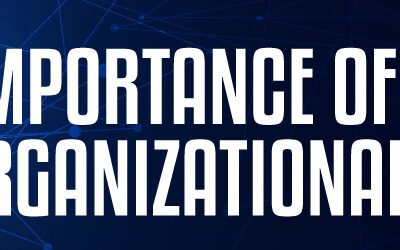
Moving to the cloud isn’t simply a trend in today’s world but a must for companies that want to stay competitive. However, migrating to the cloud is not an easy process. It requires cautious planning and exact execution to manage its complexity.
Read on to understand the essentials of cloud migration, its importance, and the benefits of a robust migration strategy.
What Is Cloud Migration
Cloud migration involves transferring an organization’s data, applications, and other business components from on-premises infrastructure to cloud-based environments. This strategic shift enables businesses to capitalize on the scalability, flexibility, and cost-efficiency of cloud computing services.
Benefits of Migrating to the Cloud
Cloud migration holds immense significance in the modern business domain. Shifting to the cloud brings a plethora of advantages, such as:
Scalability and Flexibility
Cloud migration enables firms to scale their IT resources dynamically, allowing them to meet fluctuating demands without over-provisioning or underutilizing resources. This scalability fosters agility and responsiveness in adapting to evolving business needs.
Cost Savings and Efficiency
Moving to the cloud eliminates the necessity for significant upfront investments in hardware infrastructure and lowers ongoing maintenance expenses. Furthermore, cloud services operate on a pay-as-you-go model, allowing organizations to tailor their spending according to usage and needs.
Enhanced Security and Compliance
Leading cloud providers implement robust security measures and compliance frameworks to safeguard data and improve regulatory adherence. By migrating to the cloud, businesses can use advanced security features like encryption, access controls, and threat detection. These features will help firms reduce risks and enhance data protection.
Improved Performance and Reliability
Cloud environments provide advanced computing capabilities and alternative infrastructure, reducing downtime and ensuring continuous operations. Moreover, cloud providers offer service level agreements (SLAs), enhancing uptime and reliability and boosting businesses’ confidence depending on critical applications and services.
Streamlined Management and Maintenance
Migrating to the cloud centralizes IT infrastructure management and simplifies maintenance tasks. It enables organizations to prioritize core business initiatives over routine operational activities. Automated provisioning, monitoring, and resource management tools streamline administrative tasks and enhance resource utilization efficiency.
Facilitated Innovation and Collaboration
Cloud-native architectures empower organizations to innovate rapidly and experiment with new technologies and services. Utilizing cloud-based development and collaboration tools allows teams to coordinate across different locations seamlessly. It can expedite the time-to-market for new products.

The 6 “R”s of Cloud Migration
Organizations must carefully assess their applications and workloads and choose the most suitable migration approach when embarking on a cloud migration journey. The 6 “R”s of cloud migration offer distinct strategies for migrating applications to the cloud:
Rehost (Lift and Shift)
This approach involves lifting existing applications and infrastructure from on-premises environments and shifting them to the cloud with minimal changes. Rehosting is ideal for legacy applications that require a quick and cost-effective migration path.
Re-platform
Re-platforming entails minor modifications to applications or infrastructure to optimize them for cloud environments while preserving their core functionality. This strategy improves performance, cost efficiency, and scalability compared to rehosting.
Repurchase (Drop and Shop)
Repurchasing involves replacing on-premises software or applications with equivalent cloud-based solutions or Software-as-a-Service (SaaS) offerings. This approach simplifies deployment, reduces maintenance overhead, and accelerates time-to-value for new capabilities.
Refactor (Rearchitect)
Refactoring is reworking an application or component to use cloud-native capabilities and microservice architectures. This technique improves agility, scalability, and resilience while demanding a large investment in development and testing.
Retire
Retiring involves decommissioning or consolidating redundant or obsolete applications and infrastructure components. This approach reduces complexity, maintenance overhead, and costs associated with managing legacy systems, freeing up resources for strategic initiatives.
Retain (Revisit)
Retaining involves keeping specific programs or components in their current state due to regulatory constraints, compatibility concerns, or strategic reasons. This approach allows firms to prioritize migration initiatives based on business impact and feasibility.
Factors Influencing Cloud Migration Strategy
Several factors influence the selection of a cloud migration strategy and the overall success of the migration initiative:
Business Objectives
Cloud migration strategies should align with the organization’s extensive goals, whether achieving scalability, cost optimization, or enhancing agility. Precise alignment with business objectives enhances migration efforts, delivers tangible value, and supports long-term growth.
Workload Requirements
The characteristics of migrated workloads, such as performance, availability, and latency sensitivity, influence migration strategies and deployment models. Critical applications may require high-performance computing environments, fault-tolerant architectures, and geographic independence to meet business requirements.
Technical Complexity
The complexity of existing applications, dependencies, and integrations impacts migration timelines, resource requirements, and risk mitigation strategies. Organizations must comprehensively assess application portfolios and prioritize migration efforts based on technical feasibility and business impact.
Organizational Readiness
Successful cloud migration requires organizational buy-in, stakeholder alignment, and cross-functional collaboration across IT, operations, finance, and business units. Businesses must invest in change management, training, and governance frameworks to improve smooth transitions and maximize adoption.
Technical Compatibility and Integration
Assessing the technical compatibility of existing applications and systems with the chosen cloud platform is crucial. Compatibility and integration challenges can impact migration and disrupt business operations if not addressed proactively.
Risk Management and Contingency Planning
Identifying potential risks and developing contingency plans are integral to the cloud migration strategy. Anticipate potential challenges such as data loss, downtime, and vendor lock-in, and formulate mitigation strategies to minimize the impact on business continuity.
Change Management and Training
Cloud migration often involves significant changes in workflows, processes, and organizational culture. Implementing effective change management practices and providing comprehensive training and support to employees are essential for ensuring a smooth transition and maximizing adoption.
As you begin your cloud migration journey, utilizing best practices, collaborating with experienced partners, and consistently optimizing your cloud environment to enable sustainable growth and success is essential. Compu-SOLVE Technologies Inc. can help your business with seamless cloud migration. Contact us to learn more.




